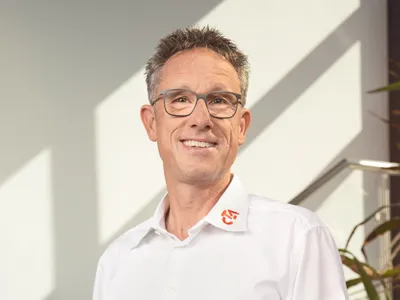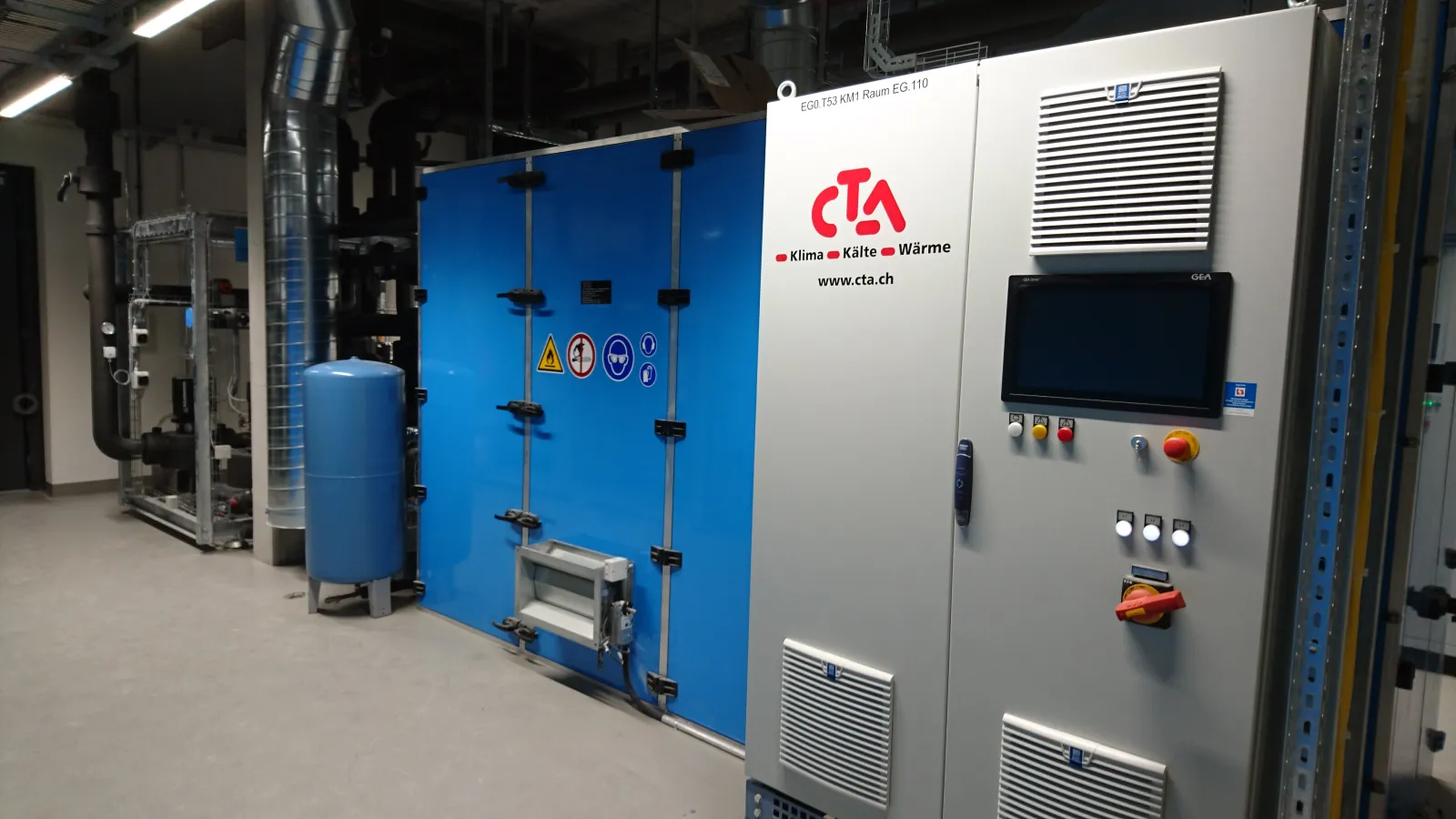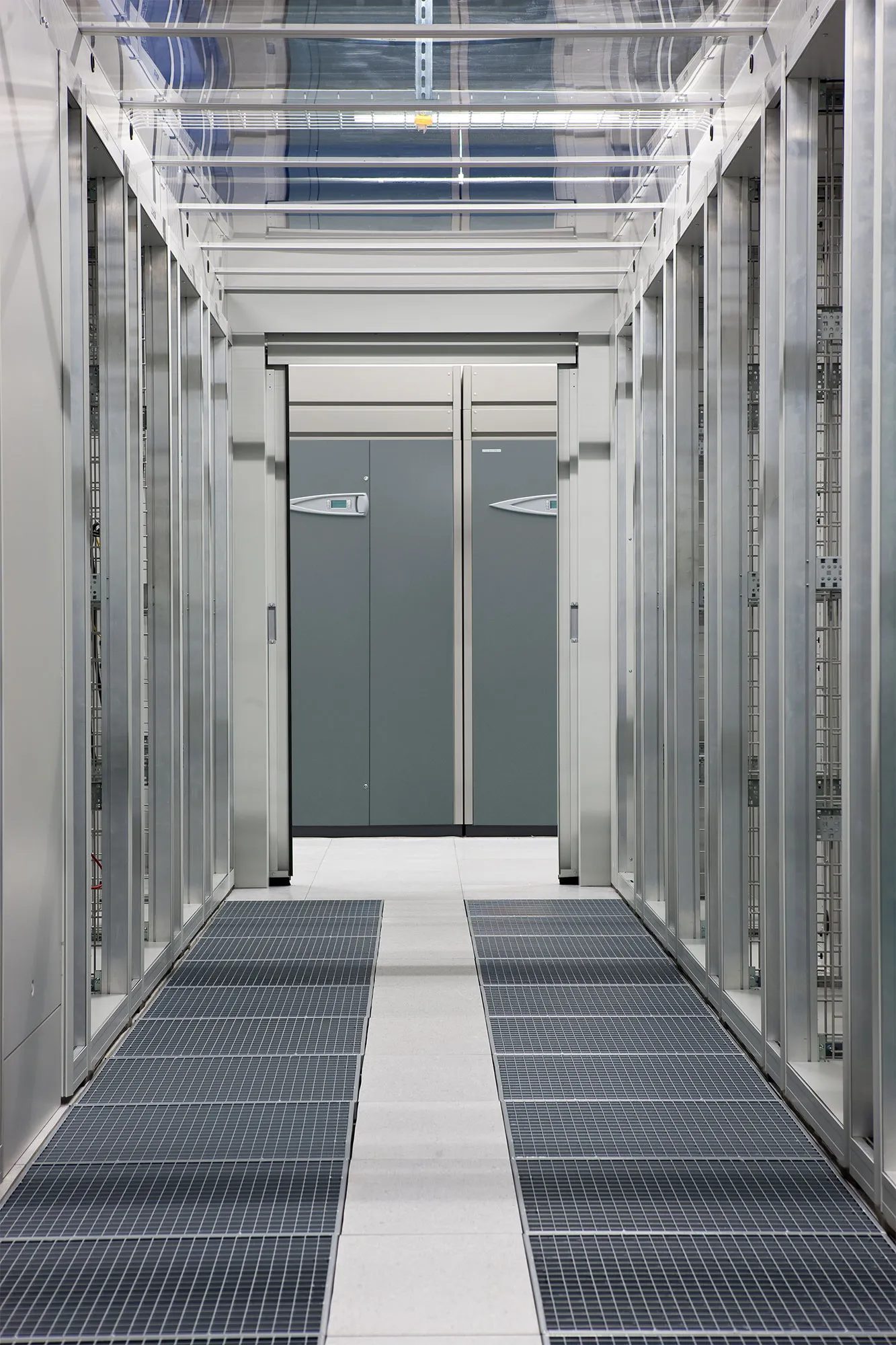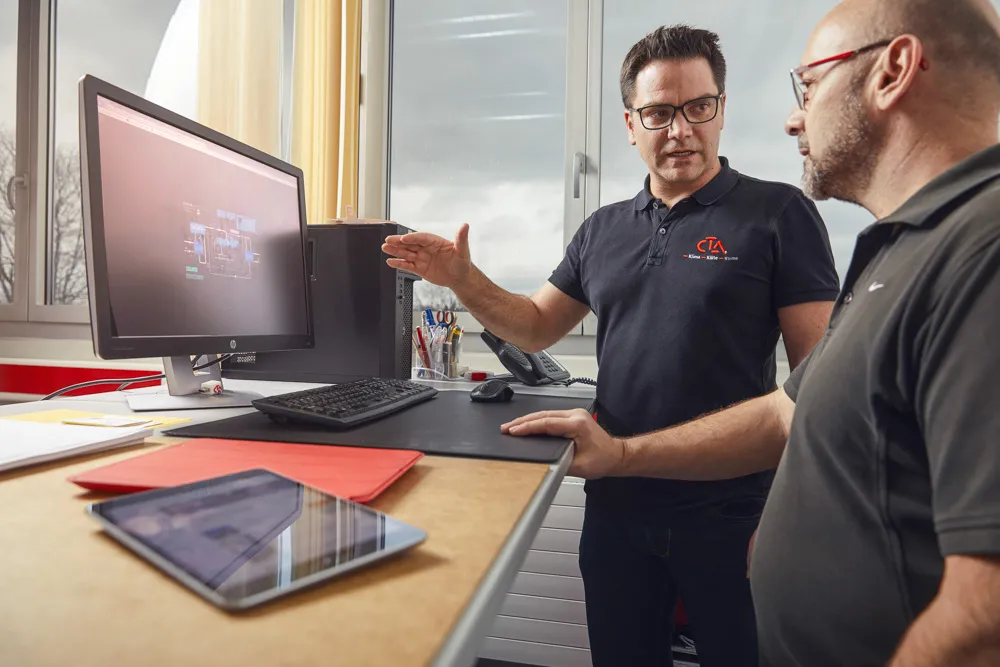Safe and climate-friendly – Chillers with NH₃ for data centres

In this data centre, heat is dissipated via cooling walls (Mountair). CTA provides cooling with two chillers. NH₃ is used as a natural refrigerant.
More data, more data centres
With the digital transformation, networking and cloud computing, data volumes are constantly increasing. More and more data centres are needed to process and store this data, well protected from unauthorised access and available to users at all times. The example of a data centre in German-speaking Switzerland shows that security, high availability and resource conservation go hand in hand. Customers – companies and ICT providers – rent server space or entire racks in the data centre, allowing them to securely store and operate their data and IT systems.
Redundant infrastructure for uninterrupted supply
The regionally active data centre has an ISO-certified (21007) Tier3+ infrastructure, where all systems are fully redundant and therefore highly available. This allows the infrastructure to continue functioning even if individual components fail. There are therefore two independent, geographically separate power supplies, each with their own emergency generator, as well as a redundant cooling supply that can cool the server racks via two separate cooling networks. For additional safety, a 40m³ cold storage tank is available to cool the system temporarily in the event of a failure.
Low transfer losses
The refrigeration technology of the data centre comes from Mountair AG (regulation, recoolers, cooling walls, hydraulic module) and CTA AG (chillers, climate cabinets). Two CTA ammonia chillers with a cooling capacity of 566 kW each are used. The refrigeration system is characterised by low transfer losses and has a very compact design. The chillers are located in easily accessible housings, allowing them to be easily maintained and serviced.

Dormant potential
«The potential to operate data centres in the most energy-efficient and environmentally friendly way possible is far from exhausted. The waste heat from the servers benefits, for example, district heating networks or neighbouring industrial plants. A win-win situation. Natural refrigerants also help to save even more CO₂ equivalents.»
Natural refrigerant for high efficiency
Both refrigeration machines work with the natural refrigerant ammonia (NH₃). Ammonia has been used as a refrigerant for more than 100 years and is characterised by its good thermodynamic properties and high energy efficiency. As a natural refrigerant, it has neither ozone depletion nor greenhouse potential and is considered one of the most environmentally friendly refrigerants. This makes the NH₃ refrigeration system particularly environmentally friendly. Since it is toxic, on the other hand, ammonia is fairly demanding in terms of planning and realisation.
Uncompromisingly safe operation
When building machine rooms with chillers in this output range, great importance must be attached to tightness and uncompromisingly safe operation when equipping the machine room. All three refrigerants require emergency mechanical ventilation, refrigerant detection and a good safety concept. For ammonia plants, the planning effort is slightly higher. Due to the toxicity of the refrigerant, an additional dispersion calculation and a risk assessment are required in the event of an accident. Experienced plant engineers know the critical points and how to build ammonia plants correctly and safely. In addition, the CTA machines for this application manage with a limited filling quantity of just 37 kg NH₃.

Their high safety standards make ammonia chillers a reliable and safe solution for cooling data centres.
Sophisticated control
The two chillers for this data centre are in 'solitary confinement', so to speak, in the machine room. They are housed in two separate, completely sealed enclosures that have their own gas sensors and ventilation. The two housings draw the air separately from the engine room. The 'used' air is independently extracted and directed outside. The two machines run alternately. This way, they achieve a similar number of operating hours. If one machine fails, the other can take over seamlessly.
Joint development of the PLC control system
Integrating the chillers hydraulically was particularly challenging. The switchover between machine and free-cooling operation had to be set very precisely. Various programmable logic controllers (PLCs) are used for the necessary optimisation, the regulation and interaction of which CTA and Mountair have jointly developed. Various PLC units control the two chillers and the cooling walls in the server rooms. A shared hydraulic master coordinates the entire system.

Pathways to an energy-efficient and environmentally friendly data centre
Generation of heat up to 105 °C
Energy source for heat networks
Use of natural refrigerants
Rainwater sprinkling for more energy efficiency
This regulation ensures that only as much cooling is provided by the chillers as the data centre – and in high summer the comfort cooling of the building – needs. Mountair’s hybrid recoolers also contribute to energy-efficient operation. When outside temperatures are high, these are sprinkled with rainwater. This reduces the cooling water temperature in the recooling circuit, which again noticeably increases the energy efficiency of the system.
Efficient recooling
Efficient recooling is particularly important for the data centre. This is because the servers give off more than enough heat for heating and domestic hot water in the building and on the grounds. The heat from the data centre outside the heating period must therefore be removed as efficiently as possible either using free cooling or with the chiller via the recooler. The hydraulics are designed in such a way that free cooling and mechanical cooling can share the work at the same time. If 'only' 20 percent of the heat is dissipated with free cooling, the chiller takes over the remaining 80 percent.
Electricity from the roof of the data centre
The sustainability of information and data processing includes obtaining the electricity for the data centres and their cooling from renewable sources if possible. For example, buildings that house data centres are often well-suited for photovoltaic systems. If local hydroelectric power can be used in addition to electricity from one's own roof, data centres can now be operated in an almost climate-neutral manner.
Contributors
Mountair AG (regulation, recoolers, cooling walls, hydraulic module)
CTA AG (chillers, IT air-conditioning)

Get in contact with us
About which upcoming project can we talk to you about?